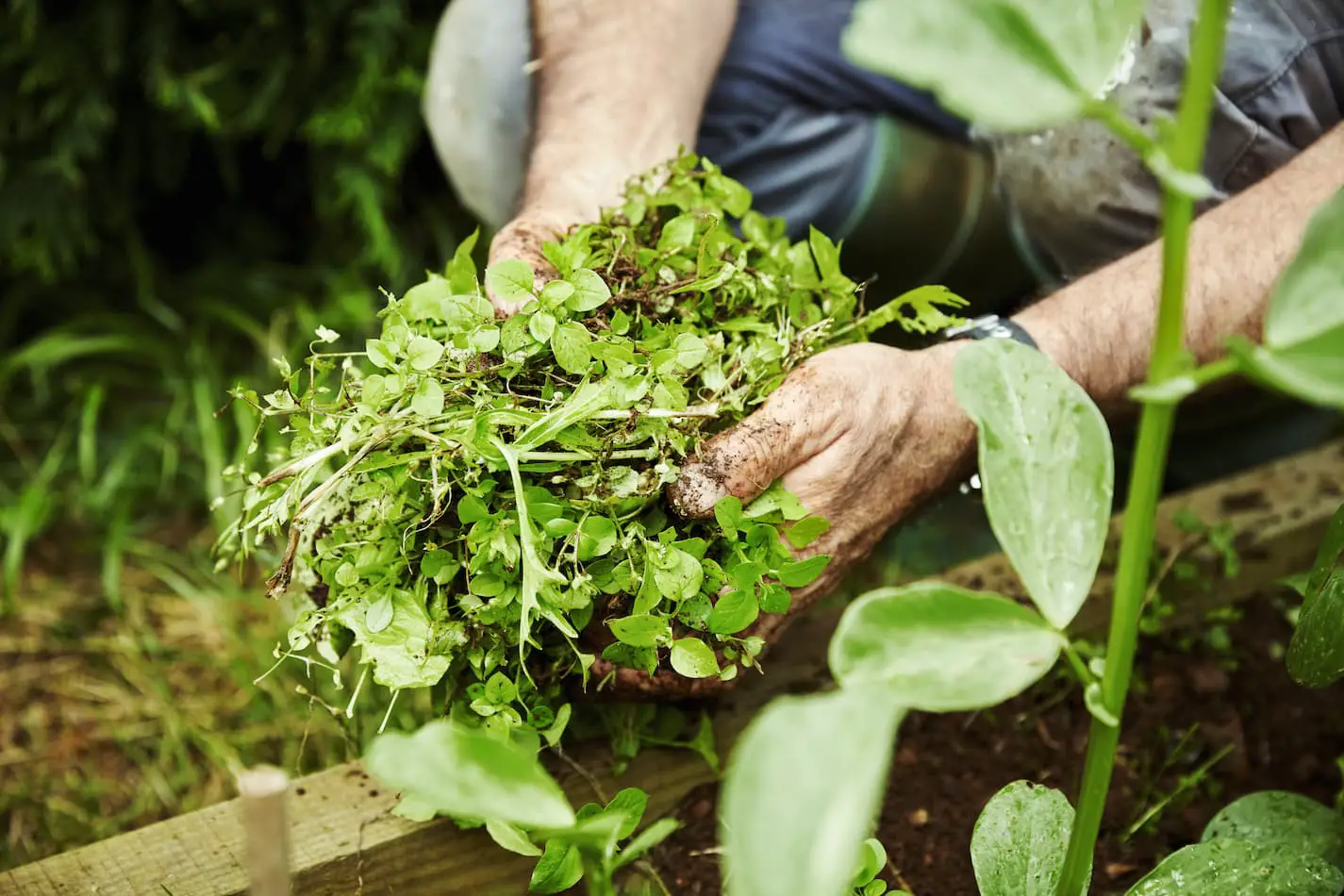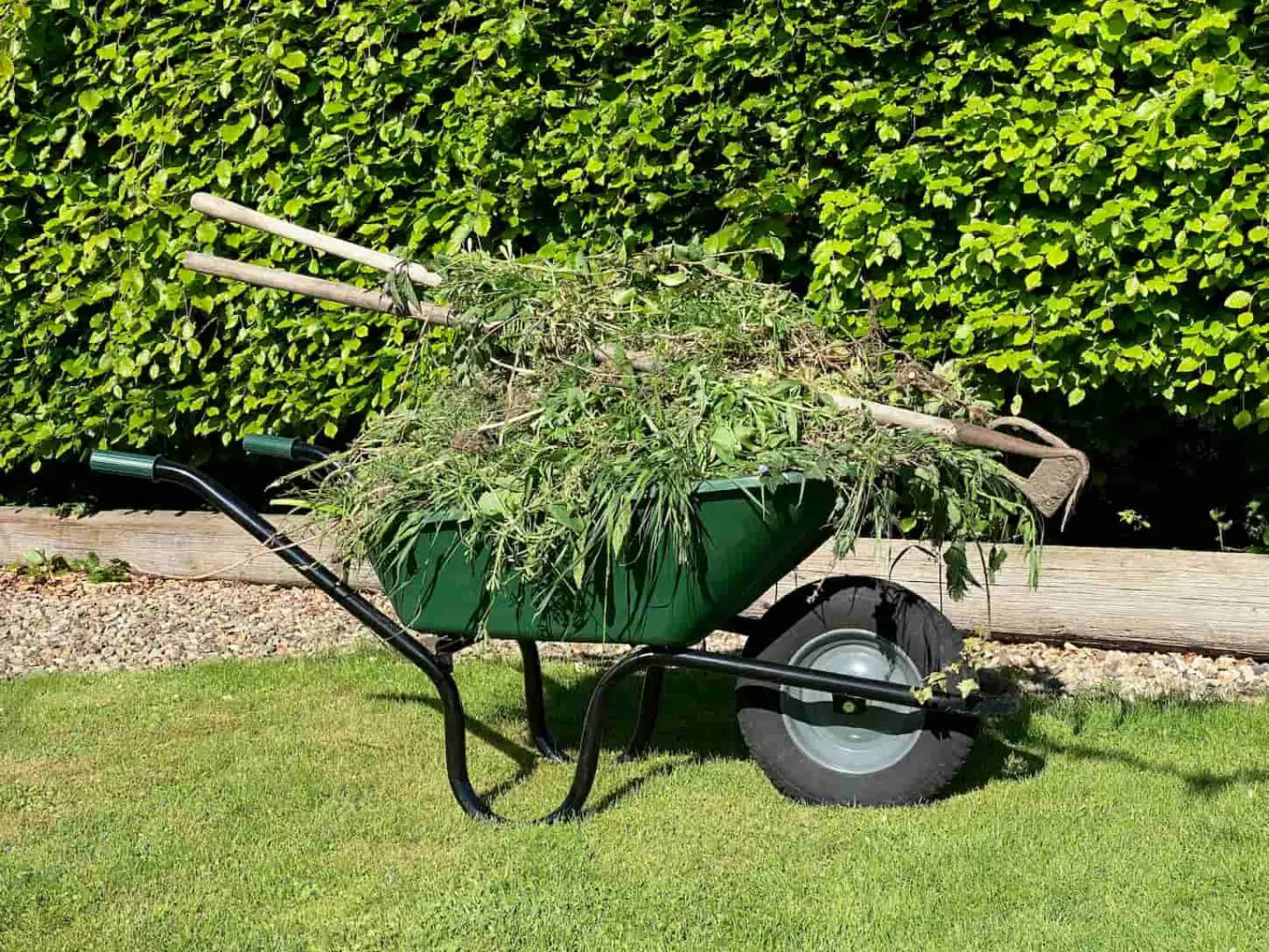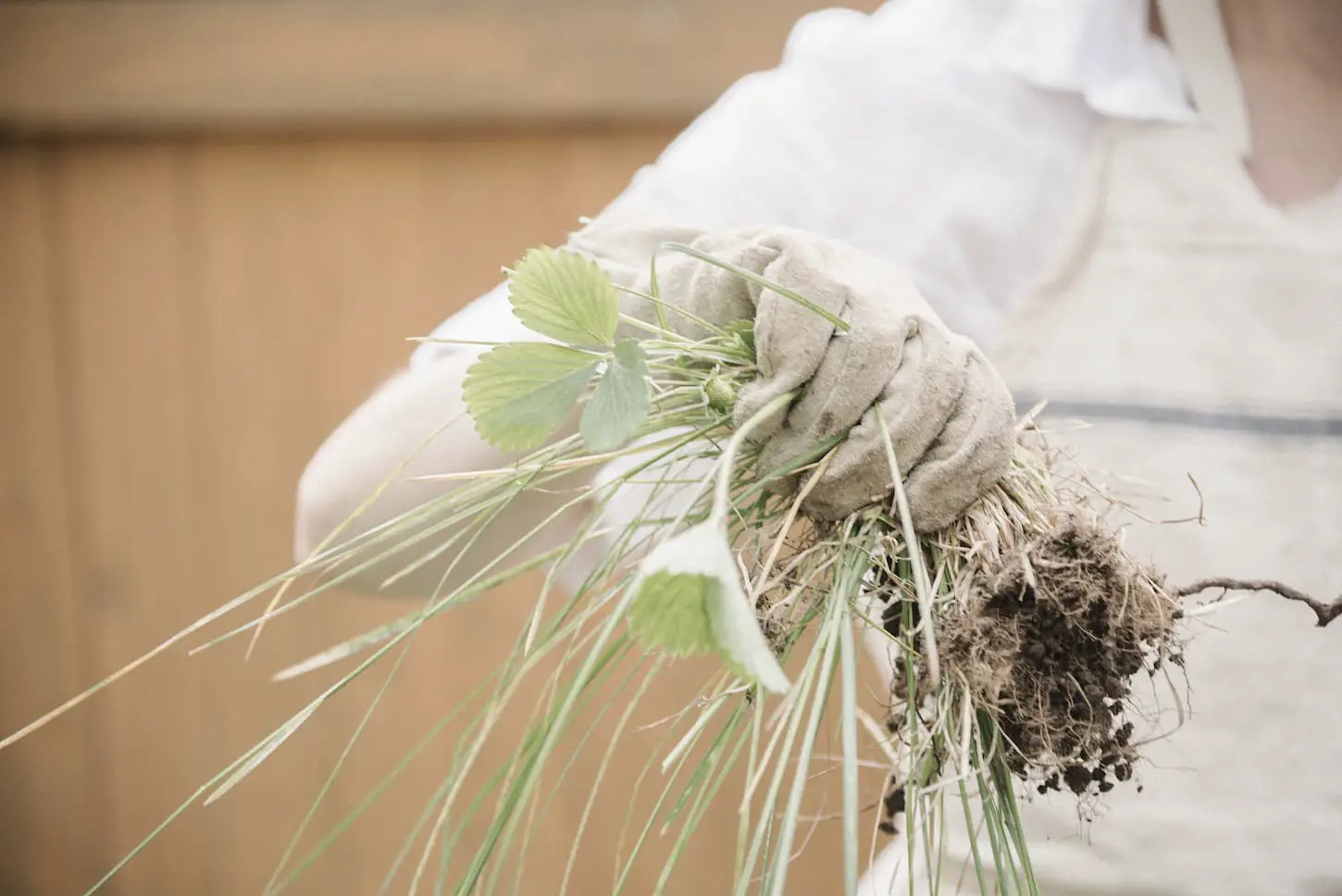From crop losses to injuries to people and pets, the adverse effects of hitchhiker weeds are far-reaching. Through an array of barbs and hooks and sticky substances, these pest plants are able to easily transplant themselves to new regions by attaching themselves to people, moving objects, and animals.
Hitchhiker weeds are almost impossible not to spread, but they can be gotten rid of in a garden by completely uprooting them, using herbicides, or using livestock to manage their growth. Manual removal of hitchhiker weeds is the best method and the only sure way to get rid of them without herbicides.
The fight against hitchhiker weeds isn’t just for gardeners, pet owners, and farmers but for everyone that walks the face of the earth.
Farmers wrack up $7.4 billion in losses every year because of these damaging plants and it doesn’t just end there. Hitchhiker weeds are the leading cause of native biodiversity loss which affects native insect pollinators and the animal population dependent on them to survive.

What Plants Do Hitchhiker Weeds Come From?
Hitchhiker weeds can come from over 500 plant species, so it is safe to say that they can come from every kind of plant. In North America, 248 of these plant species are considered invasive or noxious.
Learning how to identify these plants can go a long way in helping you get rid of them so here’s a list of the most common types of hitchhiker weeds and brief descriptions of what they look like;
- Common Burdock/ Beggars Buttons: this weed has large triangular or oval leaves and small lavender or purple flowers, their flowers can also be white or pink. The upper surface of their leaves is either smooth or hairy while the lower surface is usually pale green and wooly.
- Bidens/ Beggar-ticks: with their vibrant yellow flowers, bidens look a lot like daisies, they have a slender and leafy stem, and their seeds possess bristles and barbs that enable them to attach themselves to people and animals.
- Desmodium/ Beggar-lice: these herbaceous plants have alternate leaves with hooked hairs underneath each of them. They also have attractive flowers that look like tiny sweet peas. Desmodiums are also known as stick-tights and tick-trefoil.
- Krameria/ White Ratany: you can easily identify these shrubs through their captivating purple to red flowers which give way to unusual little fruits over time, they also have long and spiny stems.
- Bur-grass/ Sandspur: this weed is light green in color and has a prickly exterior that consists of hairy ligules. In August, their ends bear burs which carry their seeds and can easily be detached.
- Jumping Cholla: native to Mexico and the United States, jumping chollas or silver chollas are tree-like cacti, their spines go from this attractive silvery-gold shade to dark brown or black as they age.
- Houndstongue: this weed is poisonous so do not hesitate to get rid of it. It appears as rosettes with elongated leaves that have the texture of a dog’s tongue, hence their distinct name. They also have little red flowers which produce nutlets containing seeds over time.
What Kills Weeds Permanently?
The surest way to kill weeds permanently is by manual removal or the application of chemical weed killers and herbicides. Weeds can also be killed via manual removal, using heat, crowding them out, and sometimes by drought.
Weeds can be quite stubborn so it’s important that you’re thorough when getting rid of them. One sure way to permanently destroy these unwanted plants is through the application of chemical weed killers or herbicides.
When applying herbicide to weeds, please ensure that it is focused on the intended target so you don’t end up harming other plants, with that said let’s take a look at some of the best herbicides for weed control.
- Preen Garden Weed Preventer: this preventative herbicide comes in a granule form, it is best applied after tilling and will help ensure that weeds do not sprout. It lasts up to three months after application and will not interrupt the growth of desirable plants in your garden. Rain does not affect its performance.
- Compare N Save Concentrate Grass and Weed Killer: this weed killer is not only super affordable but incredibly effective. The main ingredient in its formulation is glyphosate which kills both weeds and grass. You can use this product in your garden, in your yard, and in your driveway. It can even be used to manage stump regrowth.
- Southern Ag Amine 24-D Weed Killer: this weed killer is for lawns, so you don’t have to worry about it killing your grass as it targets plants that have broad leaves. It also doesn’t interfere with the soil. Weeds wither within hours of application and are dead within three days.
- Natural Armor Weed & Grass Killer: if you’re looking for a weed killer that does not contain synthetic chemicals, you might want to consider this product. This herbicide is fast-acting and is safe to use around pets and children.
- Ortho Weed B Gone Killer: this inexpensive herbicide kills broadleaf weeds or pest plants, like clovers and dandelions, and works within hours of application.

How Do You Kill Hitchhiker Weeds Without Herbicides?
Weeds can be killed without herbicides via manual removal, laying down plastic to bake the weeds to death, crowding them out with a cover crop, or by being burned with a controlled burn (be careful with this).
Although herbicides do a great job of killing weeds, some of them can pollute the environment and enter the food chain of animals and people. So, it’s understandable If you’re not keen on using this method. You can use your hands or garden tools to effectively get rid of hitchhiker weeds instead.
Below you would find several tips you can implement to kill hitchhiker weeds that don’t involve the use of herbicides,
Tip #1: Uproot Weeds by Hands
If your garden or lawn is quite small then hand weeding shouldn’t be so overwhelming, you can also prevent these pest plants from sprouting in your garden by mowing and irrigating periodically. This method can be used to efficiently control annual broadleaf weeds.
Hand weeding is more effective at the early stages of a weed’s development, at this stage they don’t have flowers and can’t produce seeds. Weeds that are much mature can be a little challenging to uproot as their roots are established deep into the soil which makes it hard to pull them out whole and root fragments left behind in the soil will begin to sprout new plants after some time.
Tip #2: Use A Weeder or Scuffle Hoe to Get Rid of Weeds
Employ the use of a weeder when dealing with weeds growing from cracks on your walkway or patio, in case you’re having trouble picking out a weeder, the Lee Valley Tools Telescoping Crack Weeder is highly recommended. Also, scuffle hoes do a great job of uprooting weeds by gradually depleting the food supply of the weeds’ roots.
Tip #3: Lay Down Plastic to Kill Weeds
Plastic tarps or large sheets of the stuff are a great way to kill weeds in large areas quickly by making the area too hot for most plants to live in.
Black plastic is especially useful, though it can get too hot to touch with bare hands after being left out for days or weeks on end in the hot sun.
Even so, it can be a great way to kill weeds in a large area over a few days or weeks. You will have to clean up whatever mess is left under the plastic, as well as the plastic itself, though.
It’s a lot faster to rake up dried, dead weeds than most living ones. You’ll still need to pull any deeply rooted weeds out of the ground, but they should come up much easier than if they were still alive and thriving.
Pro tip: Don’t step on the hot plastic barefoot!
Tip #4: Plant A Cover Crop
Fast-growing cover crops such as Vicia villosa Roth can help get rid of weeds by smothering or suffocating them.
Tip #5: Let Your Animals and Livestock Help Control the Weeds
Some livestock animals can safely eat various kinds of weeds, so why not let them help you manage those weeds?
Our chickens help us control some smaller weeds, while goats are amazing weed-control animals. The pet cat and dog, however, aren’t so great at helping!
Tip #6: Kill Weeds with A Gas-Powered Flamer
Weeds can easily be killed through flaming; their cell walls will not be able to withstand the heat which would cause them to die slowly.
Please do not use fire in your garden if you make use of combustible mulch, or if you live in a fire-prone or dry environment.
Flaming would typically destroy annual weeds in one go but perennials with deep root systems require regular treatment for successful eradication.
How Do I Reduce the Spread of Hitchhiker Weeds?
You can help slow down the spread of hitchhiker weeds by learning how to identify them, carefully inspecting your pets and your clothing every time you go for hikes or journey into wild areas, and disposing of their seeds properly.
Here are some more things you can do to slow down the spread of these invasive plants.
- Wear clothes that are difficult for their hitchhiking mechanisms to get holds of, such as nylon and smooth polyester garments. As for footwear, leather or rubber boots are the best at keeping these plants away.
- Use a vacuum to clean your clothes, car, and accessories once you return from the outdoors. You can also give your clothes and shoes a vigorous shake to get rid of any seed that may be hiding.
- Cover exposed soil that you do not plan on making use of anytime soon with a thick layer of mulch or landscaping fabric so as to not leave as any space for these invaders.
- Composting should never be considered as a method of disposing of these weeds as many of them cannot be destroyed this way. Burn them instead or dump them in a bucket of bleach solution.
- Clip flowering weeds from the ground and carefully place them in a nylon bag for disposal.
- In some cases, weed invasion can be an indicator that your soil or your planting site has some problems, so properly maintain these locations so that weeds can be kept at bay.

How Do I Get Rid of Prickly Weeds in My Garden?
Prickly weeds in gardens (either flower or vegetable) can be removed with either herbicide or by hand. Which method to use depends on the gardener and how close the weeds are to any edible foods.
Personally, I like to remove any weeds close to edible foods by hand as much as possible to limit the accidental consumption of pesticides and herbicides.
However, if things get crazy out of control after the growing season is over (like during an abnormally warm, wet late fall season), then it’s tempting to either use some herbicides or lay down some thick black plastic to do it by hand on a larger scale. The plastic usually wins at our house, though!
Next Steps
Hitchhiker weeds are quite persistent at staying alive, trust me if they can’t get into your garden by hitching a ride on you or your pet, they’ll definitely gain access through wind or water dispersal. So, it’s important that you’re very consistent with your garden care routine.
We hope that we’ve been able to show you how to successfully keep these pest plants at bay and can’t wait to share more insightful content that’d help you on your homestead journey.
Now, usually, I recommend you read this article next so you know how to keep your chickens out of the flower beds (and away from any plants you want to protect), but in this case, go read it so you can see how to do things backward. See what you need to take away so you can let your chickens, goats, or other animals help you keep your weeds better under control.
So go read this next: 10 Ways to Keep Chickens Out of Flower Beds and Gardens.
